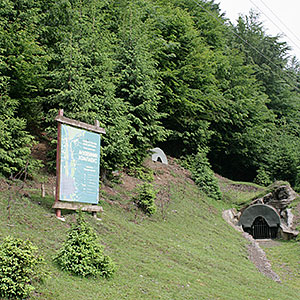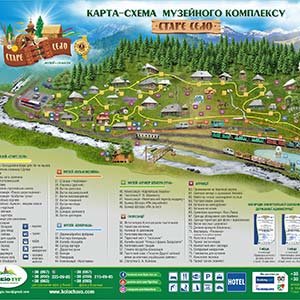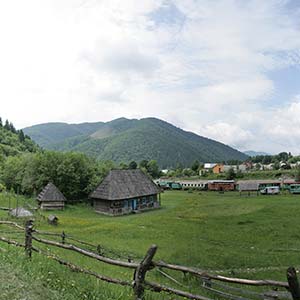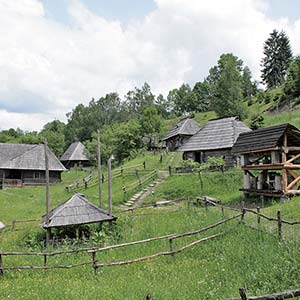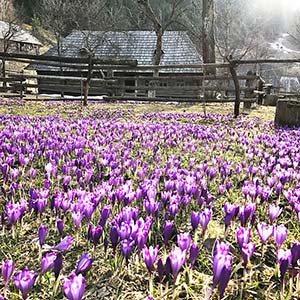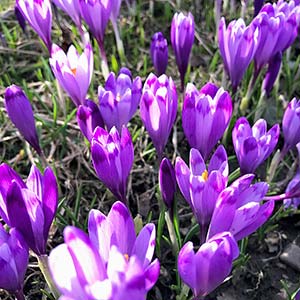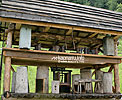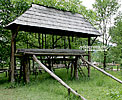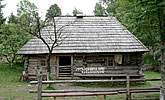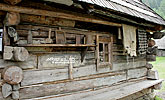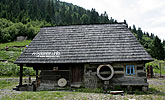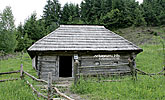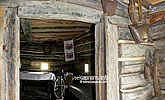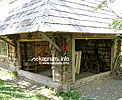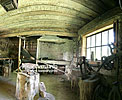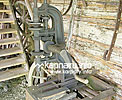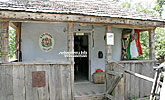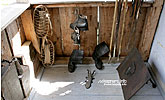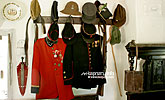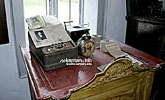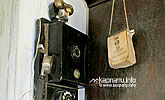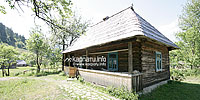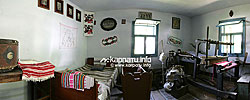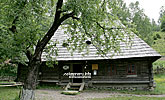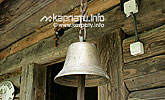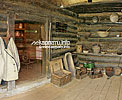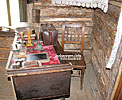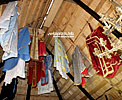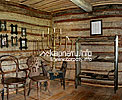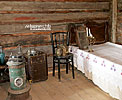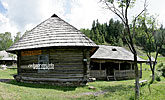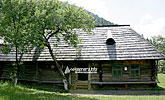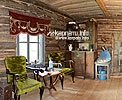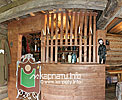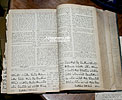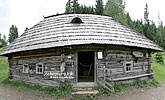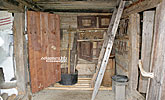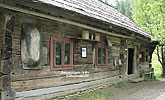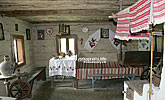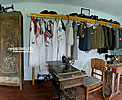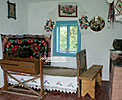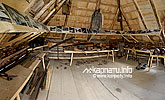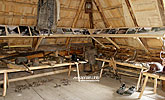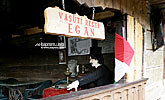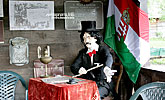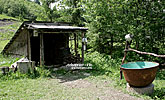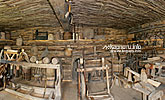Skansen in Kolochava
'Stare Selo' (the Old Village)
It's the first open air museum of folk architecture in Transcarpathian region, which aims to preserve and display the history of material and cultural life of local citizens. The museum is located in the area called Chertezhyk, below Krasna mountain valley. Nowadays 'Sare Selo' museum displays the collection of about 20 dwellings and outbuildings, equipped with everyday items and artworks of the locals, dated back to the 19-20th centuries. The unique local trait is cultural blending of various nations and ethnicities, such as Hutsuls, Boikys, Lemkys, Hungarians, Romanians, Germans, Jews, Czechs and Slovaks.
Visitor can also see there a forge building (1930-1940ies) with tools from around the whole Ukraine, and an office of Hungarian gendarmerie.
What typically draws visitors' attention is a 'khyzha', a residential building from the first half of the 20th century. Inside there's an exceptional collection of weaving products and equipment from Kolochava (cloth, clothing, towels, embroidery, wedding garments, loom).
The gem of the local collection is a three-sectioned building of a village school with an open air classroom ('summer classroom'). Back to the early 20th century, it was a place where children of different age groups were studying together. They were taught to read from church books, and to write with the help of small wooden tablets and slate pencils.
In the 1920s, every tenth inhabitant of the village was Jewish, whose culture and everyday life became a significant part of the exposition. In Jewish korchma (local tavern) 'At Volf's' visitors were served with a detsa (100 g) of horilka with snacks. When they ran out of money, they could always order 'on faith' (on credit). All the debtors were recorded in the debt book, which lies on the counter of the host.
The interior of Jewish living room suggests that the owner belonged to the most priviledged class of local citizens and was well-established in the society. There was also a room available for rent. The local 'buzhnia' (Jewish meeting house) was a place where all local Jewish men gathered every Saturday to pray. They lighted candles in the menorah (seven-lamp stand), took out their prayer books in Hebrew and started their ritual.
The other sections of the museum present dwellings of a shepherd, a carpenter and a 'sabova' (tailor's house).
In March the area of museum is covered with blooming crocuses (pretty rare type of Crocus heuffelianus). It annually creates interest among tourists coming from all around. The other popular tourist attraction is the Festival of riplianka (traditional local porridge made from potatoes, cornmeal and bryndza), held in Stare Selo each second Saturday of June.
In fact, Kolochava is reach for curious museums, such as: Soviet School, Czech School, Ivan Olbracht Museum, the Church of Holy Spirit, etc.
Students — 150 UAH.
Retired — 150 UAH.
Children — 100 UAH.
Cheese making workshops and other events are available.
Horseback riding, bicycles for hire.
Accommodation, barbecue facilities and camping are available.
Khust district
Kolochava village
Druzhba St., 26
Tel.: +38 (067) 238-09-85
+38 (067) 215-09-85
+38 (03146) 2-41-81
Go by any train of Uzhgorod direction to Volovets station, then take a bus to the centre of Kolochava.
Go by bus Lviv–Khust, Lviv–Tiachiv or Kyiv–Khust to Mizhgirya town, then take a bus to Kolochava. The museum is located 1 km far from the village centre (Bradolets quarter direction). There are road signs in the village.
More information about public transport.
By car
Go along the road Kyiv–Lviv–Chop (M-06) and in Nyzhni Vorota village turn in Volovets direction and go to Mizhgirya, where you go along the main road and follow signs of Kolochava. Go untill you see Bradolets road sign, follow the direction and go straight on 1 km further to the museum.

 Ukraine
Ukraine Poland
Poland Slovakia
Slovakia
 Українською
Українською